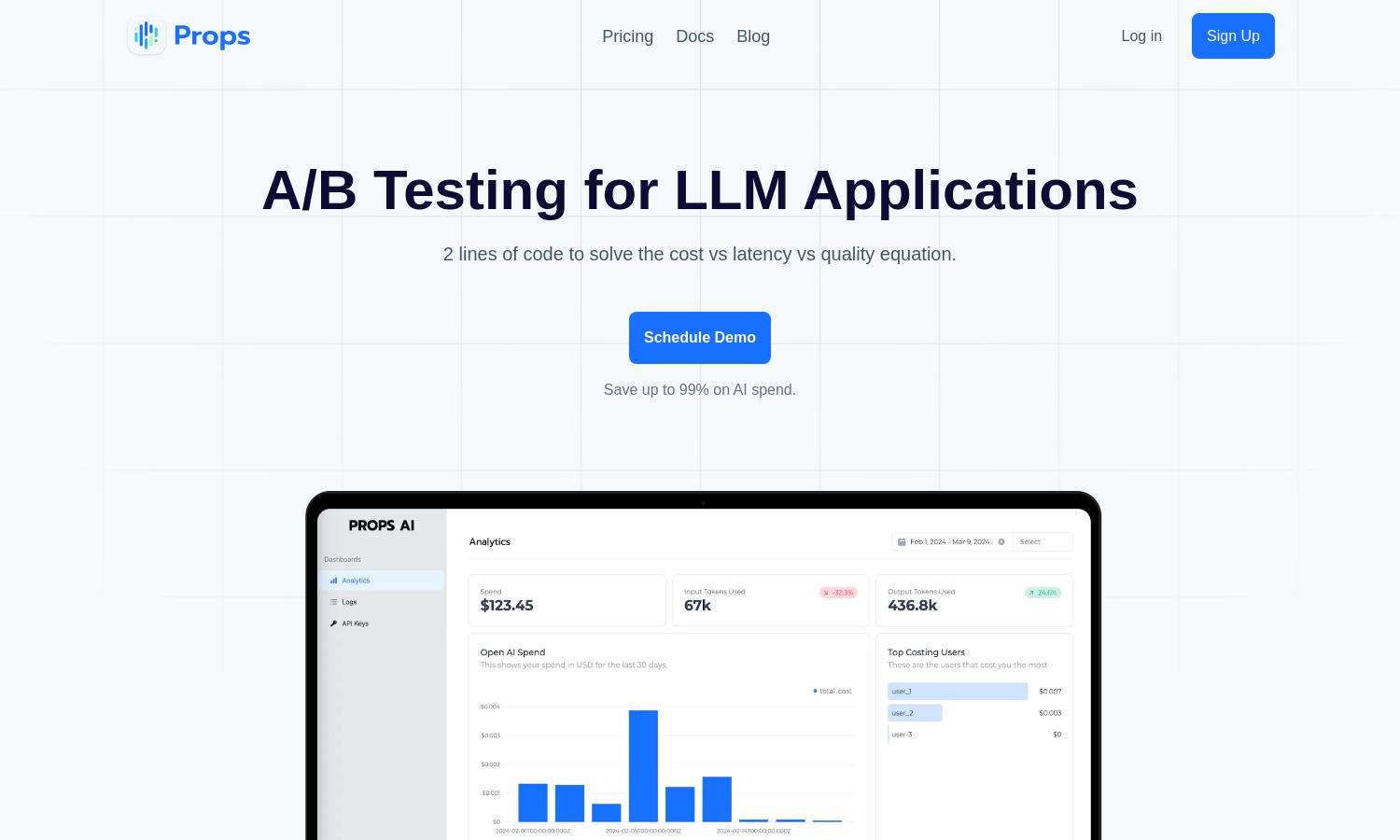Props AI

About Props AI
Props AI is designed for AI product teams seeking to streamline routing, experimentation, and monitoring processes. With its innovative AI Gateway, users can easily connect any LLM provider, conduct A/B Tests, and monitor metrics, ensuring optimal performance and valuable insights into user behavior.
Props AI offers flexible pricing plans to suit different needs, starting with a basic tier for essential features. As users upgrade, they gain access to advanced analytics and more customizable options. These enhancements not only improve model efficiency but also provide valuable insights to boost business outcomes.
The user interface of Props AI is crafted for simplicity and efficiency, facilitating easy navigation through its features. The clean layout supports a seamless user experience, while intuitive elements guide users to their goals, making it easy to connect models and monitor performance effectively.
How Props AI works
Users begin their journey with Props AI by signing up for an account and completing the onboarding process. The platform’s main dashboard allows users to easily connect to various AI model providers and set up A/B Tests. From there, they can monitor metrics in real-time, adjust settings, and utilize smart routing, ensuring an optimized AI experience.
Key Features for Props AI
Smart Routing
Smart Routing is a standout feature of Props AI, enabling users to switch seamlessly between different AI models and providers. This flexibility helps optimize performance for specific tasks, saving time and resources, while ensuring users always have access to the best model suited for their needs.
A/B Testing
A/B Testing is a key feature of Props AI, allowing teams to compare various models and prompts effectively. By analyzing real-time business metrics, users can make informed decisions that enhance user engagement and improve overall application performance, leading to better product outcomes.
Monitoring & Analytics
Monitoring & Analytics is a crucial feature of Props AI, providing detailed logs for every request and response. This functionality helps users track performance metrics, understand user interactions, and gather valuable data for future enhancements, ultimately improving decision-making and product optimization.








